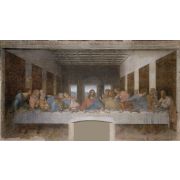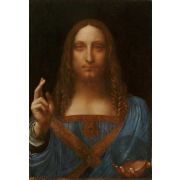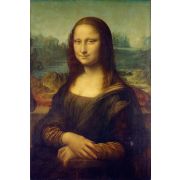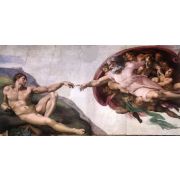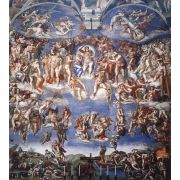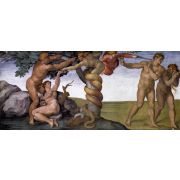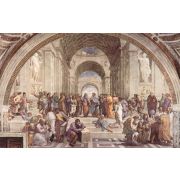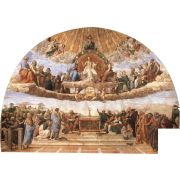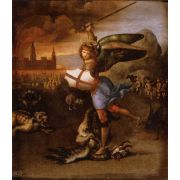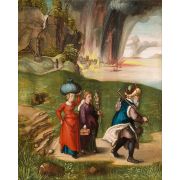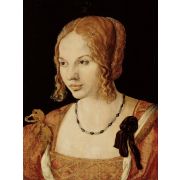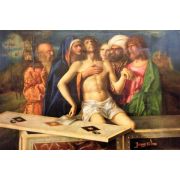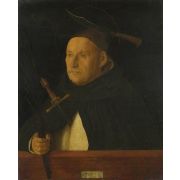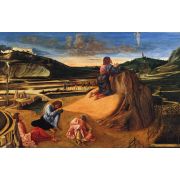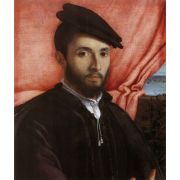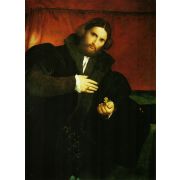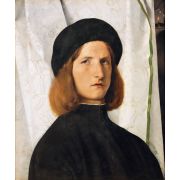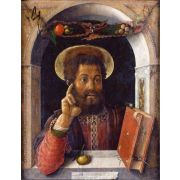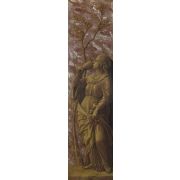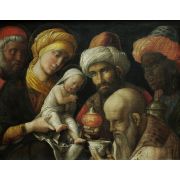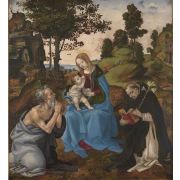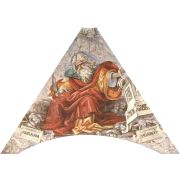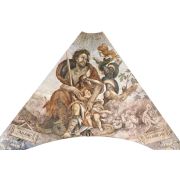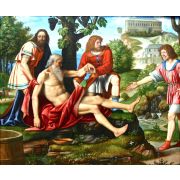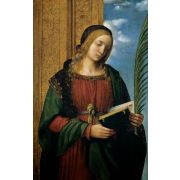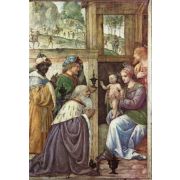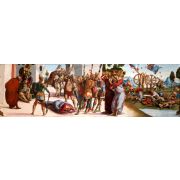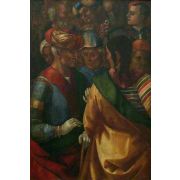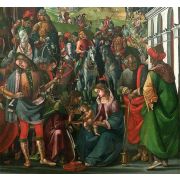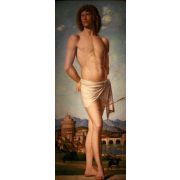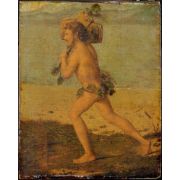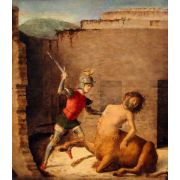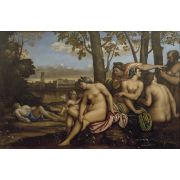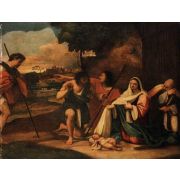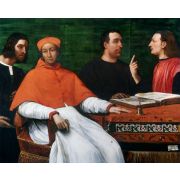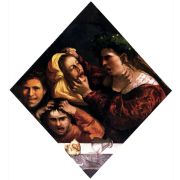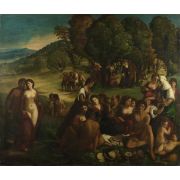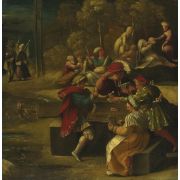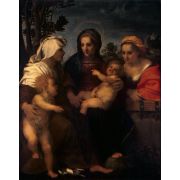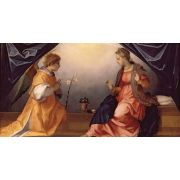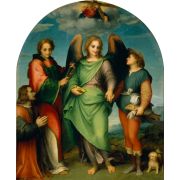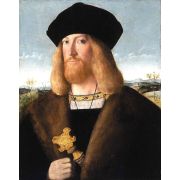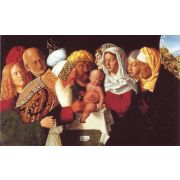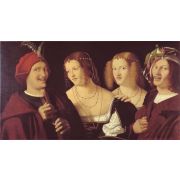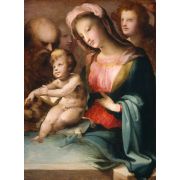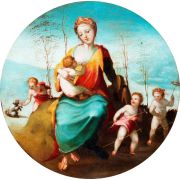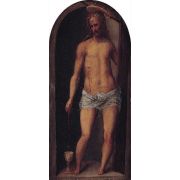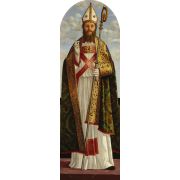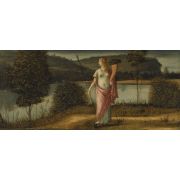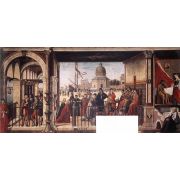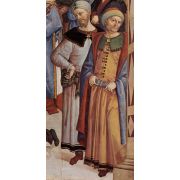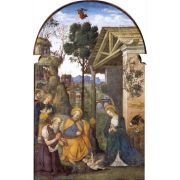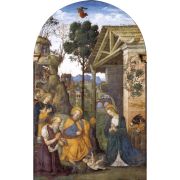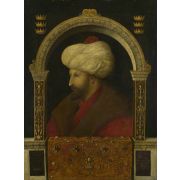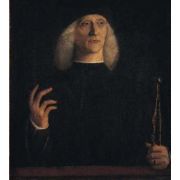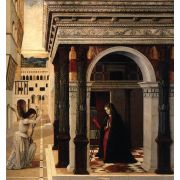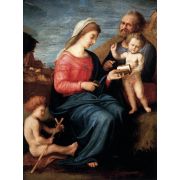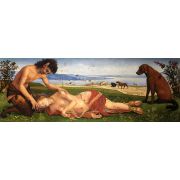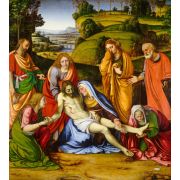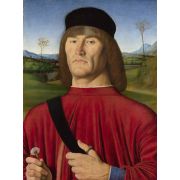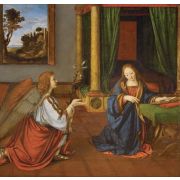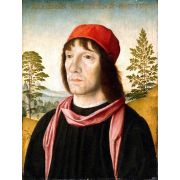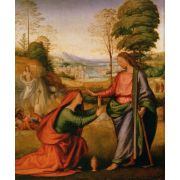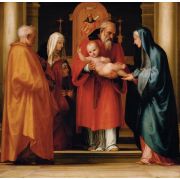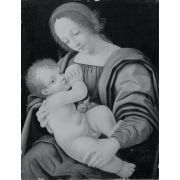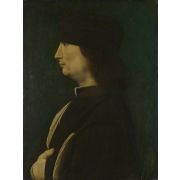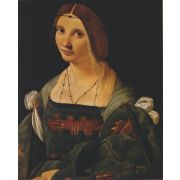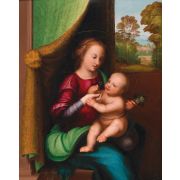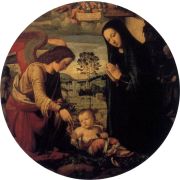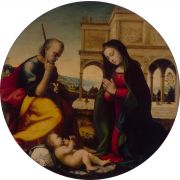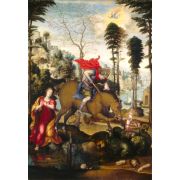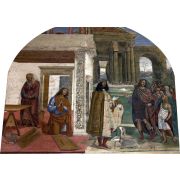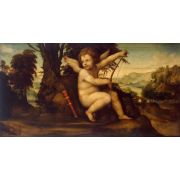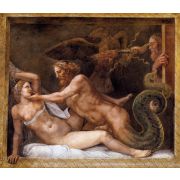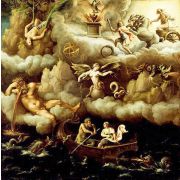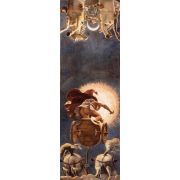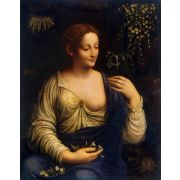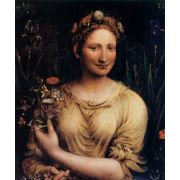
High Renaissance
High Renaissance
1 to 27 out of 27 artists
Leonardo da Vinci
1452 -1519, Italian / High Renaissance, 43 works
Michelangelo
1475 -1564, Italian / High Renaissance, 163 works
Raphael
1483 -1520, Italian / High Renaissance and Mannerism (Late Renaissance), 203 works
Albrecht Dürer
1471 -1528, German / High Renaissance, 438 works
Giovanni Bellini
ca. 1430 -1516, Italian / High Renaissance, 171 works
Lorenzo Lotto
ca. 1480 -1556, Italian / High Renaissance, 108 works
Andrea Mantegna
ca. 1431 -1506, Italian / Early Renaissance and High Renaissance, 102 works
Filippino Lippi
ca. 1459 -1504, Italian / High Renaissance and Early Renaissance, 84 works
Bernardino Luini
ca. 1484 -1532, Italian / High Renaissance, 78 works
Luca Signorelli
1445 -1523, Italian / High Renaissance, 64 works
Cima da Conegliano
ca. 1459 -1517, Italian / High Renaissance, 63 works
Sebastiano del Piombo
1485 -1547, Italian / Mannerism (Late Renaissance) and High Renaissance, 47 works
Dosso Dossi
ca. 1489 -1542, Italian / High Renaissance, 45 works
Andrea del Sarto
1486 -1530, Italian / Mannerism (Late Renaissance) and High Renaissance, 43 works
Bartolomeo Veneto
ca. 1480 -1531, Italian / High Renaissance, 40 works
Domenico Beccafumi
1484 -1551, Italian / Mannerism (Late Renaissance) and High Renaissance, 37 works
Vittore Carpaccio
ca. 1465 -1526, Italian / High Renaissance, 30 works
Pinturicchio
1454 -1513, Italian / High Renaissance, 29 works
Gentile Bellini
ca. 1429 -1507, Italian / Early Renaissance and High Renaissance, 27 works
Piero di Cosimo
1462 -1522, Italian / High Renaissance, 26 works
Andrea Solario
ca. 1465 -1524, Italian / High Renaissance, 26 works
Fra Bartolomeo
1472 -1517, Italian / High Renaissance, 26 works
Giovanni Antonio Boltraffio
1467 -1516, Italian / High Renaissance, 24 works
Mariotto Albertinelli
1474 -1515, Italian / High Renaissance, 23 works
Il Sodoma
1477 -1549, Italian / High Renaissance, 15 works
Giulio Romano
1499 -1546, Italian / High Renaissance and Mannerism (Late Renaissance), 12 works
Francesco Melzi
1493 -1570, Italian / High Renaissance, 9 works
1 to 27 out of 27 artists
The term "High Renaissance" was later used to describe the artistic peak of the Renaissance. It refers to thirty years (c. 1490–c. 1527) when groundbreaking, iconic works of art were made in Italy during a time when society was at its best. A revival of classical art and a focus on the humanities led to the rise of artists with unmatched skills. Their works were influenced by a deep understanding of science, anatomy, and architecture, and they are still some of the most awe-inspiring masterpieces in art history.
In 1855, a French historian named Jules Michelet came up with the word "Renaissance" to describe the art, architecture, and sculpture that were new and different in Italy from 1400 to 1530. In his book The Lives of the Most Excellent Painters, Sculptors, and Architects, Giorgio Vasari used the word "rebirth" to talk about the same period. This is why he used the word (1568).
In his book, The History of Ancient Art in Antiquity (1764), archeologist and art historian Johann Joachim Winckelmann called the classical art of the Greeks the "High Style." This is where the term "High Style" came from. Winckelmann's groundbreaking book started the study of art history and became a cornerstone of intellectual life in Europe. It also reached a large number of people who were interested in art. He thought that beauty was the point and that the Greeks had achieved that goal. He wrote in High Renaissance art that "only the Italians knew how to paint and figure beauty."
By the early 1800s, the term Hochenrenaissance, which is German for "High Renaissance," was being used to describe the period, which was thought to have started around the time Leonardo da Vinci painted "The Last Supper" in the 1490s and ended when Emperor Charles V's army took Rome in 1527. Some modern scholars have said that the term oversimplifies things in the last thirty years.
The High Renaissance started with the works of Leonardo da Vinci. His paintings, like The Virgin of the Rocks (1483–1485) and, especially, The Last Supper (the 1490s), showed psychological complexity, the use of perspective for dramatic focus, symbolism, and scientifically accurate detail. But both works were done in Milan. It wasn't until 1500, when Leonardo moved back to Florence, the thriving center of art and culture, that his work affected the city. Many artists went to Santissimi Annunziata church to look at his sketch for The Virgin and Child with St. Anne (around 1499–1503).
The Vitruvian Man, which Leonardo made in 1490, had a significant impact on artists of his time, like Raphael and the architect Bramante, as well as artists who came after him, like Albrecht Dürer and William Blake.
A few famous artists ruled the High Renaissance, and rivalries grew between them as they tried to win the support of nobles and be the best at what they did. At the same time that people flocked to Florence to see Leonardo's sketch for The Virgin and St. Anne, Michelangelo's Pietà was making him a rising star (c.1499). Michelangelo thought sculpture was the best art form and even sculpted the human condition in his paintings. With the creation of the famous statue David (1501–1504), he became known as the High Renaissance sculptor whose work stood out. David was given a central place in the city of Florence, keeping with the city-state's spirit to protect its citizens' rights.
Michelangelo and Leonardo started to compete with each other when they were both asked to paint frescoes for the Hall of Five Hundred in 1504. Jonathan Jones, an art critic, said this about Michelangelo: "He wanted to beat Leonardo and was very competitive. It turned into a contest of creativity and imagination, not skill because they were both so good at what they did. Leonardo, the older artist, was already well-known not only as a talented painter but also as a person with an original way of thinking... [Michelangelo] claimed to have a similar personal, unique vision." This personal vision can be seen in how the artist chose a battle scene in which naked bathers were attacked, giving the naked men a dynamic, almost sculptural look. The two frescos, The Battle of Anghiari (1503–1506) by Leonardo and The Battle of Cascina (1504–1506) by Michelangelo, were never finished because both artists had to work on other projects. Even so, the works continued to affect other artists, especially Raphael, who copied the masterpieces to improve their art.
Due to Pope Julius II, who ruled from 1503 to 1513, Rome became the center of art during the High Renaissance. He was a well-known art collector who owned the Laocoon (from around 40 BC) and the Apollo Belvedere (from about 120–140 AD), as well as other critical classical works that became the basis for the art museums at the Vatican. He was a powerful man who turned the Papacy into an economic and military power controlling most of Italy. His goal was to make Rome, not Florence, the cultural center of Europe. To do this, he worked hard to get the best artists of the time to work for him. He convinced Raphael to move to Rome and paint the frescoes in the papal apartments at the Vatican. After asking Michelangelo to make the tomb for the pope, he persuaded the reluctant artist to paint the ceiling of the Sistine Chapel (1508-1512). Because the Pope wanted to rebuild St. Peter's Basilica and change the look of the Vatican, he asked Bramante, Michelangelo, and Raphael to help him with his big plans. After Julius II died, Pope Leo X, the son of Lorenzo de Medici, the patriarch of Florence's ruling (and art-loving) family, continued his father's support of the arts.
During the early part of the Renaissance, Humanist ideas were widely spread. In the Gothic period, artists idolized both the secular and the religious. In the 14th century, artists in Florence were more interested in where man fits in the world. Artists of the High Renaissance took this question further by exploring the idea of the universal man, or a genius who was inspired by God and could do well in all areas of art and science. People still use the term "Renaissance man" to describe a well-rounded and skilled person in many different intellectual and cultural fields.
This idea came from the work of Leon Battista Alberti "Leonardo da Vinci showed that "a man can do anything if he wants to," as Vasari wrote in Lives of the Artists, "In the normal course of things, many men and women are born with remarkable talents; but sometimes, in a way that goes beyond nature, a single person is marvelously endowed by Heaven with beauty, grace, and talent in such abundance that he leaves other men far behind, all his actions seem inspired, and everything he does comes from God." Everyone agreed that this was true of Leonardo da Vinci, a wonderful artist who did everything with grace and used his genius so well that he could easily solve any problem he studied." This standard ruled not only the time but also how people thought about artistic talent for a long time. It made the artist into a god-inspired genius instead of just a well-known craftsman.
The High Renaissance ideals and humanism kept inspiring people outside of Italy, though their styles and art were very different. It influenced the North European Renaissance, led by Albrecht Dürer, Pieter Bruegel, and others, and the Venetian School, led by Giorgione, Titian, and Palladio, an architect. Correggio's quadrature works, on the other hand, influenced artists like Carlo Cignani, Gaurdenzio Ferrari, and Il Pordenone. They also greatly affected how domes and ceilings were decorated in the Baroque and Rococo periods.
Leonardo died in 1519, and Raphael died the following year when he was only 37. These deaths made the Italian High Renaissance less lively. In 1527, the armies of Holy Roman Emperor Charles V sacked Rome. This was the end of the era. The brutal and scary event cut Rome's population from 55,000 to 10,000, and it caused the city to fall apart and bankrupt. Many people no longer thought living up to the High Renaissance's ideals was possible. Michelangelo's Last Judgment, a fresco in the Sistine Chapel from 1534 to 1541, showed the darker mood of the next 30 years. He made pietas and pictures of enslaved people held captive in sculpture, like The Atlas Slave (1530-1534).
The Mannerists, like Jacopo Pontormo, Rosso Fiorentino, Giorgio Vasari, and Francesco Salviati, were influenced by Michelangelo's later ways of expressing himself. His way of drawing people, especially naked men, influenced many artists. The works of the Renaissance also had a significant impact on artists of the Baroque period, the Neoclassicists, and the avant-garde movements of the 20th century. For example, Pablo Picasso used Raphael's The Fire in the Borgo (1514) in his 1937 painting Guernica. In this painting, a woman leans out of a burning building and hands her baby to the people below.
The art made by the artists of the Italian High Renaissance is still some of the most famous and well-known artists in history. The Mona Lisa, which was painted around 1519, The Last Supper, which was painted in the 1490s, The Creation of Adam, which was painted in 1512, and The Sistine Madonna, which was painted in 1513, have all been used in many songs, TV shows, videos, and ads.
Also, the ideas of the High Renaissance, such as the artist as a genius, the foundational nature of classical art, the individual as the center of the universe, the importance of science and exploration, and the focus on Humanism, have had a significant impact on the social and cultural values of the world ever since.

